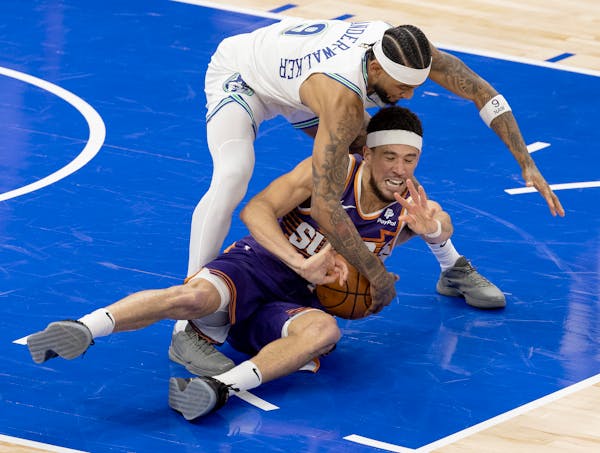The top leader of the Minnesota State higher education system is visiting 20 cities in four days this week to drum up interest in a new scholarship program — and new business for college campuses eager for more students.
Chancellor Devinder Malhotra is hosting media, employers and lawmakers at community colleges across the state to promote the system's workforce development scholarships, which started as a $1 million pilot project this past school year to draw students to high-demand occupations. This spring, the state put up $7 million more toward the program, funding hundreds more scholarships worth $2,500 each for students in manufacturing, agriculture, health care services, information technology, early childhood education and transportation programs.
Malhotra's blitz also comes as Minnesota State leaders are anxiously watching fall enrollment: The system, which recently increased tuition by 3%, is bracing for another enrollment dip after years of declines. Malhotra said he hopes the new scholarships can draw last-minute arrivals on the eve of the fall semester.
"The goal is to get more students who otherwise would not be here," Malhotra said. "If we do our work well — if we raise awareness — more individuals will come and enroll."
Amid shrinking high school graduation classes, the system is by no means alone in dealing with enrollment challenges. But it relies much more heavily on tuition than the flagship University of Minnesota or private campuses and, with its focus on workforce development, it's hit harder when a booming economy keeps workers away.
Officials say the workforce scholarship pilot in 2018-2019 was a success. Almost 400 students took advantage of the program, which covers roughly half their tuition and fees at the system's 30 two-year colleges. Based on preliminary numbers, 90% of those students returned for the spring semester, compared with about 65%, on average, for the system.
"Many of our students come from economically fragile backgrounds," Malhotra said. "They drop out because life happens."
Malhotra said many colleges were able to raise matching funds from local employers and others, allowing them to more fully cover participating students' costs. For example, the White Bear Area Chamber of Commerce and several other groups pitched in to increase the scholarship amount to $3,000 at White Bear Lake-based Century College. Malhotra said he routinely hears from employers desperate for skilled workers for hard-to-fill positions.
"We are positioning Minnesota State to be a player in dealing with these challenges and providing the state [with] the workers it needs," he said. "We need to enhance access, and we need to enhance it quickly."
The infusion of extra dollars from the state — $2 million this school year and $6 million next year — will allow Minnesota State to increase the number of scholarships to almost 670 this fall. Next fall, the program will expand to the seven universities in the system, benefiting students who received the scholarships at the community college level and transferred to four-year institutions.
Willow Schuller took a welding class at St. Cloud Technical and Community College during her senior year of high school as part of the state's Postsecondary Enrollment Options program that allows high school students to earn college credit. A self-described "girlie girl" who was part of a tiny minority of women in the class, Schuller planned to pursue a nursing degree at North Dakota State University.
But her instructor pushed her to stick with welding, noting the voracious demand for the program's graduates. Schuller found she loved the work, once spending eight hours straight in the campus shop. Receiving a workforce development scholarship for the certificate program sealed the deal. The college offers $3,000 grants after four local employers chipped in to supplement the state funding.
Before she had even started her studies, Schuller landed a job this summer with a local manufacturing company after passing a hands-on test.
"I think it's cool I'll also be doing the work in the real world," she said. "It was all too good to pass up."
Malhotra said the goal of his statewide tour is clearly twofold: He doesn't want students — especially the kind of underrepresented students the system is eager to draw — to leave opportunities on the table. Both those already accepted in qualifying programs and those who haven't yet applied for admission can seek the scholarships.
But, as officials stressed during a recent budget discussion, failing to meet enrollment targets this fall can put the system in a tough financial spot. Student groups argued last month that the systemwide tuition increase trustees approved might further crimp enrollment.
Malhotra says if the scholarships help the system enlist more students, campuses will be a "positive impact on our resource base." He also hopes his campus visits might spur additional offers to match the state dollars.
"These scholarships have energized our campuses and our philanthropic communities," he said.
Mila Koumpilova • 612-673-4781

University of Minnesota police arrest 9 after pro-Palestinian encampment set up on campus
2 dead in Lino Lakes, no known threat to public, police say
Teen charged with murder in deadly St. Paul shooting last month

